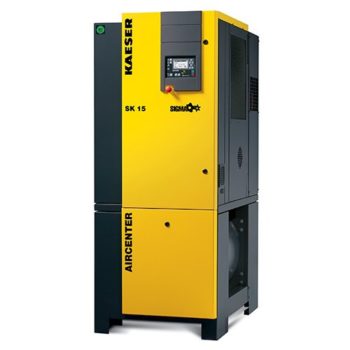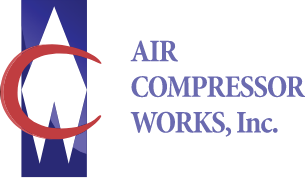Air Compressor Works
Post
Don’t Let Your Compressor Be a Turkey
November 18, 2019

Your compressor can be considered a “turkey” depending on the type of control it has. The more time the compressor control allows your compressor to be partially loaded, or unloaded, the more power is used costing you money.
Here are the control types with the “turkey” rating . The bigger the turkey, the more money it will cost you to run it.
Piston Compressors:
Start/Stop
Most commonly used in 5-10 HP compressors to allow the pressure to build and the unit to shut down. The pressure band is usually 40 PSI so that the unit only starts 6/8 times in an hour. If the compressor starts more than 8 times an hour, the motor could overheat causing damage. Small turkey
Constant Speed
In Constant Speed mode, the motor is always running. However, the compressor loads and unloads mechanically so that when the maximum pressure is reached, no air is produced. The usual pressure band on this is 10-15 PSI. Normally we will see this type of control on 10 HP and up for reciprocating compressors.
The downside is that a compressor running more than 50% unloaded is using energy and making no air. Medium Turkey
Rotary Screw Compressors:
Modulation
This was the first control on rotaries. It was designed to give constant pressure without regard of energy usage. A butterfly valve on the inlet is constantly moving to maintain discharge pressure by restricting the amount of air going into the airend. If a rotary compressor has a constant tone and pressure, and is over 10 years old, it’s most likely using modulation control. This also can be determined from the manual, as well as the control panel.
Unfortunately, as simple as this control may be to maintain a constant pressure, it is an energy hog. At 50% load it uses approximately 85% of KW. Example – 50 HP unit with modulation making 100 CFM uses 43 HP or $10,920 a year at 4,000 hours over more efficient controls. Super Large Turkey

Load/No Load
The next step in control logic was to load and unload the rotary screw compressor much like a reciprocating unit. This works well with the appropriate amount of storage so that the unit does not cycle more than once every minute or two. Many compressors have been installed using the load/no load control but lack of storage, can cause fast cycling. As a result, these were changed back to modulation. This was done in good faith to preserve the machine, but the compressor now consumes an extraordinary amount of additional energy.
You can tell if you have a load/no load machine by listening for the change in tone, as well as blow down cycle, which must exhaust air every time the machines unloads. If your machine isn’t running properly, additional receiver capacity should be added. Medium Turkey
VFD Control
This is the latest control system that started in the early 90’s by bolting a VFD on an existing rotary air compressor. This was moderately successful as the units were not necessarily designed to run at the lower speeds both from an airend and motor standpoint. Current VFD compressors are designed to have a 75% turn down so that a 500 CFM machine can operate efficiently as low as 125 CFM. A current VFD rotary screw air compressor can save 35% over modulation machine, and 10-15% over a load/no load machine in most applications.
To determine whether you have a VFD machine by sound is easy. It has a ramp up and ramp down sound as the drive changes the motor speed to meet flow demands. It will also be evident on the control panel as most show load percentage or motor hertz. NO TURKEY (only gravy)

Hopefully this takes some of the mystery out of compressor controls, and lets you know if you have a turkey in your facility.
For a reciprocating compressor choose the control that most fits the load on the unit. For the rotary screw determine what type of control you may have and how you can make it the most efficient.
Still not sure? We’ll be happy to determine if you have the best type of control set up on your compressor. Call Us at (800) 345-4364 or email SalesTeam@ACWUS.COM
Contact Us
Contact Us
Palm beach:
1956 W 9th St
Riviera Beach, FL 33404
Monday – Friday 7:30 AM - 4:30 PM
Map and Directions
Miami:
7292 NW 25th St
Doral, FL 33122
Monday – Friday 7:30 AM - 4:30 PM
Map and Directions
Phone Number:
Areas We Serve
- Miami
- Fort Lauderdale
- Hollywood
- Boca Raton
- Stuart
- Vero Beach
- Delray Beach
- West Palm Beach
- Homestead
- Key West
- Fort Pierce





